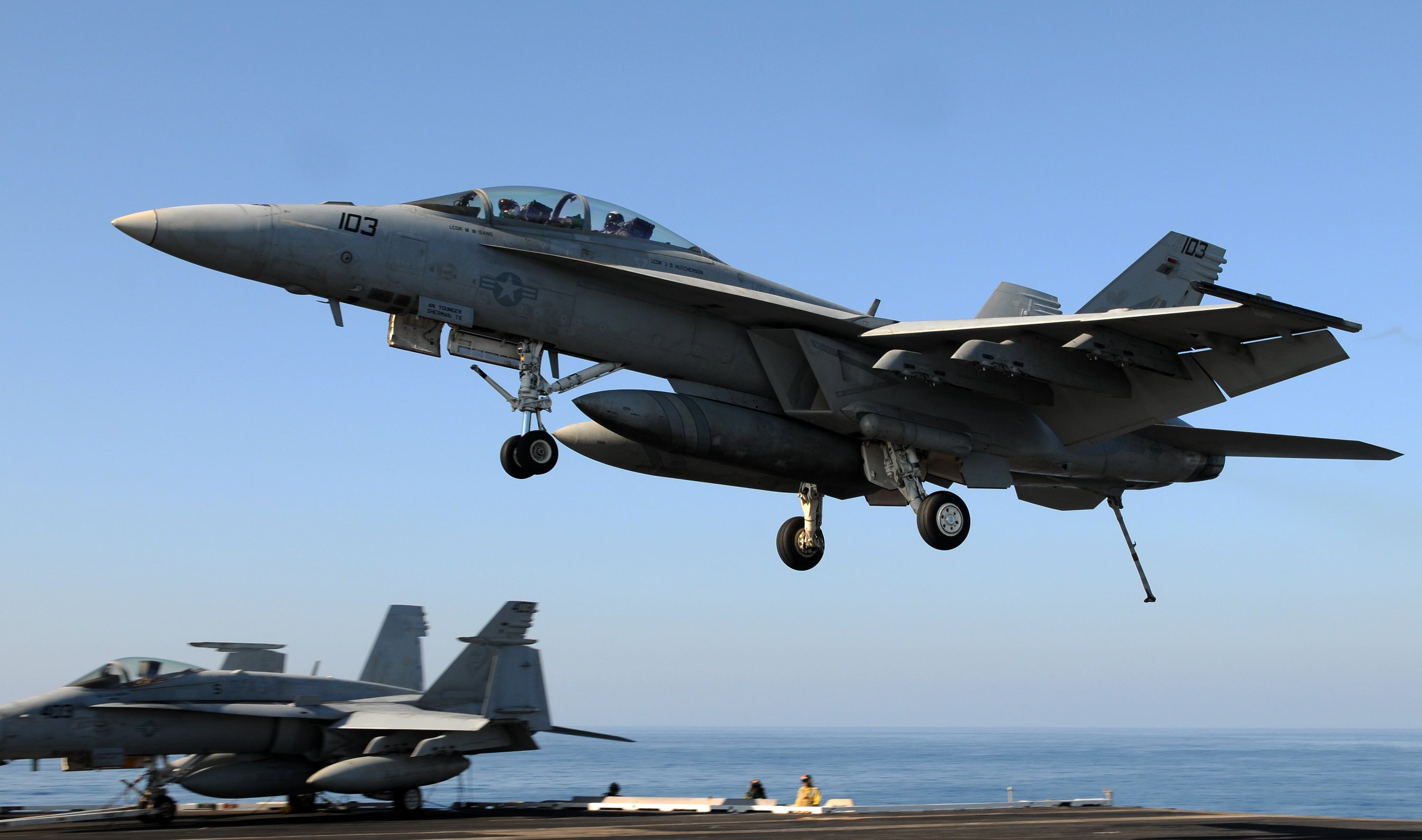Navy pilots have reported 461 physiological episodes in F/A-18 fighter jets and T-45 trainer aircraft since May of 2010 — an average of more than one every six days, Navy officials say.
Yet the source of the problem remains unclear despite years of study and the recent completion of a 30-day review led by Adm. Scott Swift, commander of the Pacific Fleet.
On Thursday, Adm. Bill Moran, vice chief of naval operations, briefed reporters about additional safety measures coming as a result of the review that are designed to curb this bedeviling trend.
The Navy intends to immediately add a water separator in the T-45's Onboard Oxygen Generation System, or OBOGS, a component common in high-performance jets but not found in the training aircraft. "Without a water separator in that system," Moran said, "we believe that there's a potential for water moisture to get in there and not provide effective, dry air."
"There are a number of those components being delivered and installed as we speak," Moran said Thursday.
A new mask configuration — there have been 300 new masks recently delivered to training centers — will continue to be implemented in the training aircraft as well. T-45 instructors are already using the redesigned masks, and the plan is to have flight-starved students begin using them soon.
"They're out in the training command today," Moran said. "Instructors are doing warmup flights and using that mask before we put students in the airplane to make sure that they understanding procedures."
Navy student pilots have been without planes for almost two and a half months, but with the addition of the new measures, Moran said he expects "to get our student pilots back in the airplane for warmup flights some time in the next couple weeks."
The Navy has struggled to find solutions to curb physical symptoms relating to a loss of oxygen inside the cockpit, a problem that led to the deaths of four Navy pilots over the last two decades, a Navy release said.
Recent efforts to address the problem have included installing redesigned OBOGS in 84 percent of in-service F/A-18s. The Navy fitted hyperbaric chambers aboard the carriers Bush, Vinson and Reagan for immediate treatment of aircrew. And some pilots have been provided watches that measure cabin altitude thresholds.
Moran said there is also a next-generation OBOGS being designed at the same time these modifications are being installed. The next-gen system would be an across-the-board overhaul in all planes, Moran said, and is being designed now in the event that the steps currently put in place fail.
Despite continued efforts, though, problems are persisting beyond the training arena.
Two physiological episodes were reported by pilots from the carrier Bush — one in February and another in April — during operations in the U.S. Central Command region. Fortunately, both episodes occurred near the carrier, and the pilots were able to safely land and receive immediate treatment in one of the ship's onboard hyperbaric chambers.
When asked what the procedure would be in the event an episode occurred over hostile territory far removed from the assistance of a nearby carrier, Moran declined to comment.
Capt. James McCall, commander of Carrier Air Wing 8, has instructed his aircrews to descend to the lowest safe altitude if that situation arises.
"Depending on the specific operating area and intelligence-assessed threat in that area, I have provided clear guidance, as has the chain of command, with regards to minimum safe altitude," McCall said. "My mission commanders are expected to balance that guidance, and all real-time risk factors, to make an informed decision on what is the lowest safe altitude. Additionally, we have numerous coalition divert airfields throughout the region to use in the case of any aircraft emergency."
While measures are being put in place, the number of reported physiological episodes continues to climb.
Just last week, the Air Force's 56th Fighter Wing at Luke Air Force Base grounded flight operations for its F-35A Lightning II fighters after five reported PEs in a month.
In a testimony Tuesday by Vice Adm. Paul A. Grosklags in which he addressed the ongoing concerns, he made clear that the problem is no closer to being solved than when the Navy began its 30-day review of the problems plaguing T-45 and F/A-18 pilots.
"We’re not doing well on the diagnosis," Vice Adm. Paul A. Grosklags, commander of Naval Air Systems, told lawmakers on Tuesday. "To date, we have been unable to find any smoking gun."
The Navy implemented an updated reporting protocol in 2010 in an effort to gather data that would provide better understanding of the root cause of PEs. Since then, the number of reported cases involving air contamination, oxygen system failures and decompression sickness has skyrocketed.
The Navy has investigated hundreds of reports of pilots experiencing physiological episodes. So far, 382 cases have been adjudicated concerning the F/A-18 alone, of which 130 involved some type of possible contamination, 114 involved an environmental systems control failure, 50 involved oxygen system failure, 13 involved a breathing gas failure, 91 involved human factors and 76 were inconclusive, Navy officials said.
J.D. Simkins is the executive editor of Military Times and Defense News, and a Marine Corps veteran of the Iraq War.




